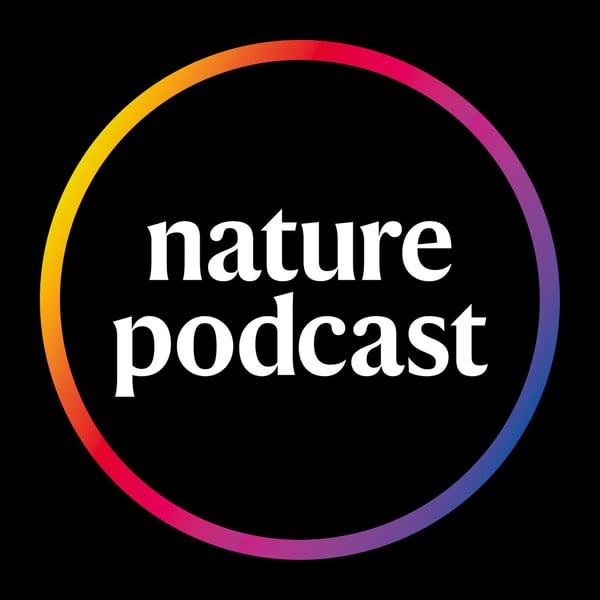Earliest crafted bone tools date back 1.5 million years
Nature Podcast
[email protected]
4.4 • 859 Ratings
🗓️ 5 March 2025
⏱️ 30 minutes
🧾️ Download transcript
Summary
00:46 Ancient humans made bone tools 1.5 million years ago
A 1.5-million-year-old cache of animal-bone tools reveals that ancient humans systematically crafted with this material much earlier than previously thought. Researchers uncovered 27 bone artefacts in Tanzania honed into sharp tools almost 40 cm long. This discovery pushes back the dedicated manufacture of bone tools by around a million years and could have helped these early humans develop new kinds of technology. “This raises a lot of interesting questions,” says study author Ignacio de la Torre.
Research Article: de la Torre et al.
09:11 Research Highlights
Cane toads’ remarkable homing abilities, and evidence that the block of rock that makes up southern Tibet originated in what is now Australia.
Research Highlight: Take me home, country toads
Research Highlight: Lhasa′s rocks reveal an Australian birthplace
11:45 A trove of antibacterial molecules hidden in human proteins
To help protect against infection, cells in the body will selectively cut proteins to produce molecules known as antimicrobial peptides, according to new research. A team has found that many potential peptides appear to be locked up within proteins — to get them out, cells shift the activity of a waste-disposal system called the proteasome, known for its role in protein degradation and recycling. In tests, one of these peptides showed efficacy at protecting mice from infection, indicating that these molecules could one day have therapeutic potential.
Research Article: Goldberg et al.
News and Views: Protein waste turned into antibiotics as a defence strategy of human cells
21:08 Briefing Chat
An update on two missions heading to the Moon to look for water, and why fears that a crucial ocean-current system will collapse in the face of climate change may be incorrect.
Nature: Meet the ice-hunting robots headed for the Moon right now
Nature: Iconic ocean-current system is safe from climate collapse ― for now
Hosted on Acast. See acast.com/privacy for more information.
Transcript
Click on a timestamp to play from that location
| 0:00.0 | Nature. In a experiment. |
| 0:05.1 | Why is it like so far? |
| 0:08.0 | Like it sounds so simple. |
| 0:09.3 | They had no idea. |
| 0:10.8 | But now the data's... |
| 0:12.0 | I find this not only refreshing, but at some level astounding. |
| 0:19.9 | Nature. |
| 0:25.7 | Welcome back to the nature podcast. |
| 0:28.8 | This week, the earliest bone toolkit and how cell's waste disposal systems |
| 0:31.5 | could help defend against infection. |
| 0:34.1 | I'm Charmany Bandelle. |
| 0:35.3 | And I'm Nick Petra Chow. |
| 0:52.7 | No. fiction. I'm Charmany Bandelle. And I'm Nick Petra-Chao. A cache of bone tools has been discovered from 1.5 million years ago. |
| 0:55.3 | We never expected that there will be one tools there. |
| 0:57.1 | That's Ignacio Delatore. |
| 1:03.3 | Along with his colleagues, Ignacio has uncovered 27 bone artifacts in Tanzania. |
| 1:09.9 | We know that ancient humans or hominins have been making bone tools for a long time, but this discovery pushes back the date on that |
| 1:13.1 | by about a million years. And the number of artefacts and the way they were created |
| 1:19.0 | implies that this was a pretty systematic effort on the part of the hominins and raises |
| 1:25.1 | questions about how sophisticated their technology was. |
| 1:29.4 | I called up Ignacio and asked him about what he found. |
| 1:32.7 | So we've discovered that one and a half million years ago, humans were already making |
... |
Transcript will be available on the free plan in -25 days. Upgrade to see the full transcript now.
Disclaimer: The podcast and artwork embedded on this page are from [email protected], and are the property of its owner and not affiliated with or endorsed by Tapesearch.
Generated transcripts are the property of [email protected] and are distributed freely under the Fair Use doctrine. Transcripts generated by Tapesearch are not guaranteed to be accurate.
Copyright © Tapesearch 2025.

